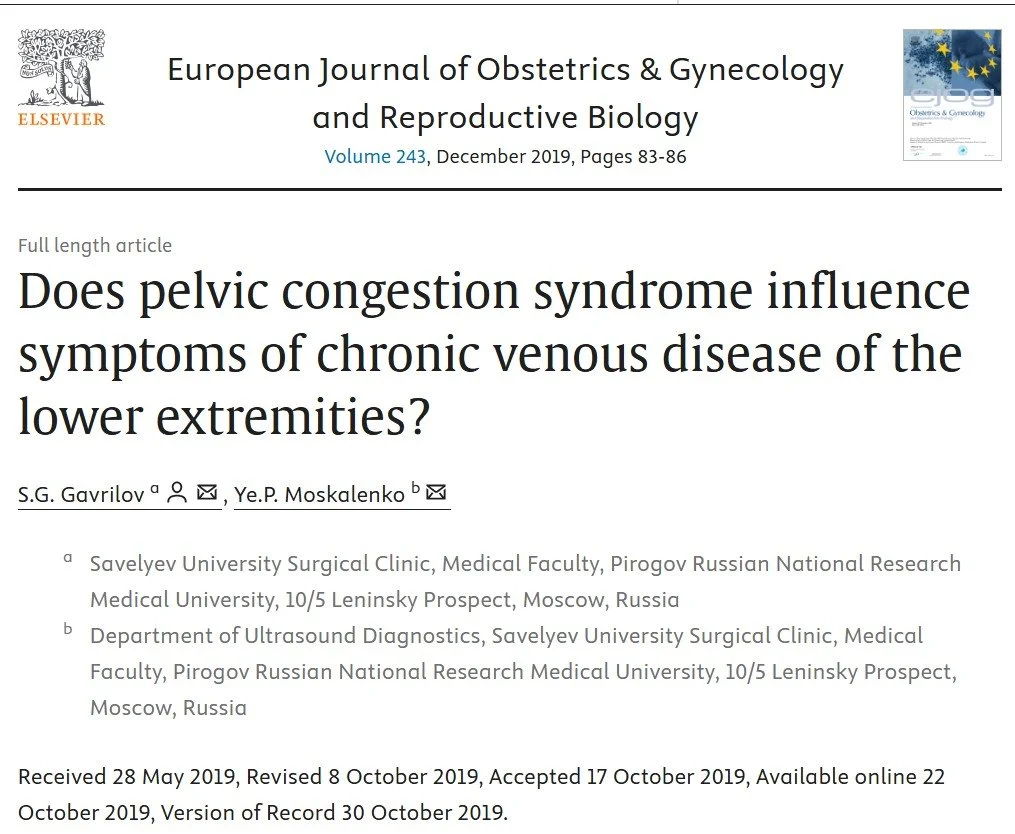Unraveling the Connection: Leg Pain, Pelvic Pain, and Venous Insufficiency
Many people experience nagging leg pain due to chronic venous insufficiency, a common condition where the leg veins struggle to pump blood back to the heart. But what if your leg pain isn't the whole story?
There's a strong, often overlooked connection between leg vein issues and another condition called pelvic congestion syndrome (PCS), which is caused by problematic veins in the pelvic area.
Think of it this way: if your leg veins aren't working properly, it's not uncommon for the veins in your pelvis to also be struggling. In fact, research shows a clear link. One study concluded that PCS is associated with a greater chance of experiencing symptoms of chronic venous disease, and those symptoms tend to be more severe.
You Have Leg Pain and Pelvic Pain – What's Next?
If you have leg pain that points to venous insufficiency (confirmed by an ultrasound) and pelvic pain that suggests PCS, you might wonder: Which problem should be tackled first?
In interventional radiology, there are two main approaches:
Ascending Treatment: This involves treating the leg veins first, then addressing the pelvic vein issues later.
Descending Treatment: This strategy prioritizes treating the pelvic congestion syndrome first, followed by treatment for the leg veins.
The Real-World Challenge of Treatment Order
While treating PCS first (the descending approach) might seem logical to address the root cause, in the United States, it often presents significant hurdles. Medical insurance plans can make diagnosing and treating PCS particularly challenging, frequently requiring extensive prior authorizations for advanced imaging and treatments.
Based on real-world experience, the path to choosing the descending treatment option can be a long and frustrating one due to these systemic obstacles. Because of this, it's often more practical to opt for the ascending treatment strategy: focusing on your leg veins first, and then addressing any pelvic vein issues.
The Recurring Varicose Vein Question
You might be asking, "If I only treat my leg veins while leaving the pelvic veins untreated, will my leg varicose veins come back?" It's a valid concern.
Some smaller studies have looked at whether treating Pelvic Congestion Syndrome (PCS) affects the recurrence of varicose veins in the legs. These studies suggest that if PCS isn't treated, there might be a higher chance of leg varicose veins returning.
However, it's important to note that varicose vein recurrence is quite common on its own (approximately 50% in 5 years), making it difficult to definitively say how much of that recurrence is directly tied to untreated PCS.
The Bottom Line: A Synergistic Approach
If you're dealing with both pelvic congestion syndrome and lower extremity venous insufficiency, remember that addressing both conditions can lead to a more effective and beneficial outcome. It's a synergistic approach where treating one can positively impact the other, ultimately helping you find relief from your symptoms.

